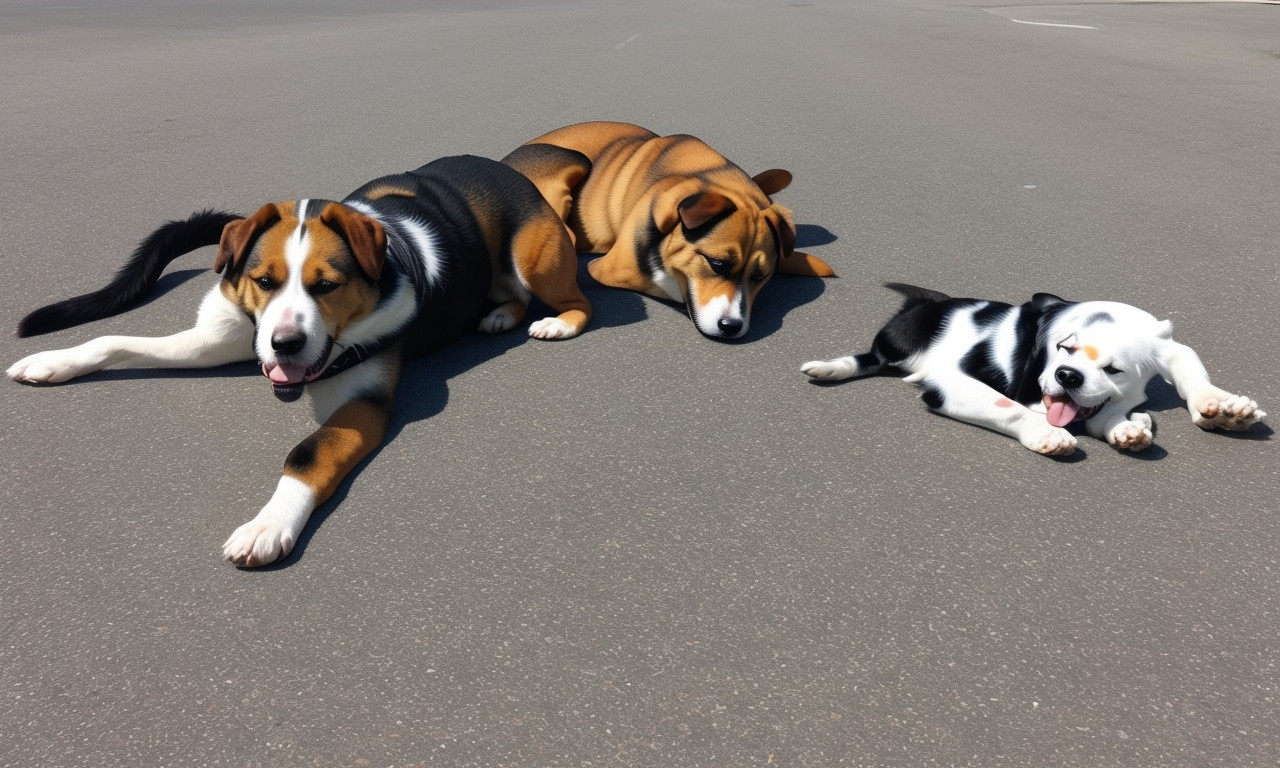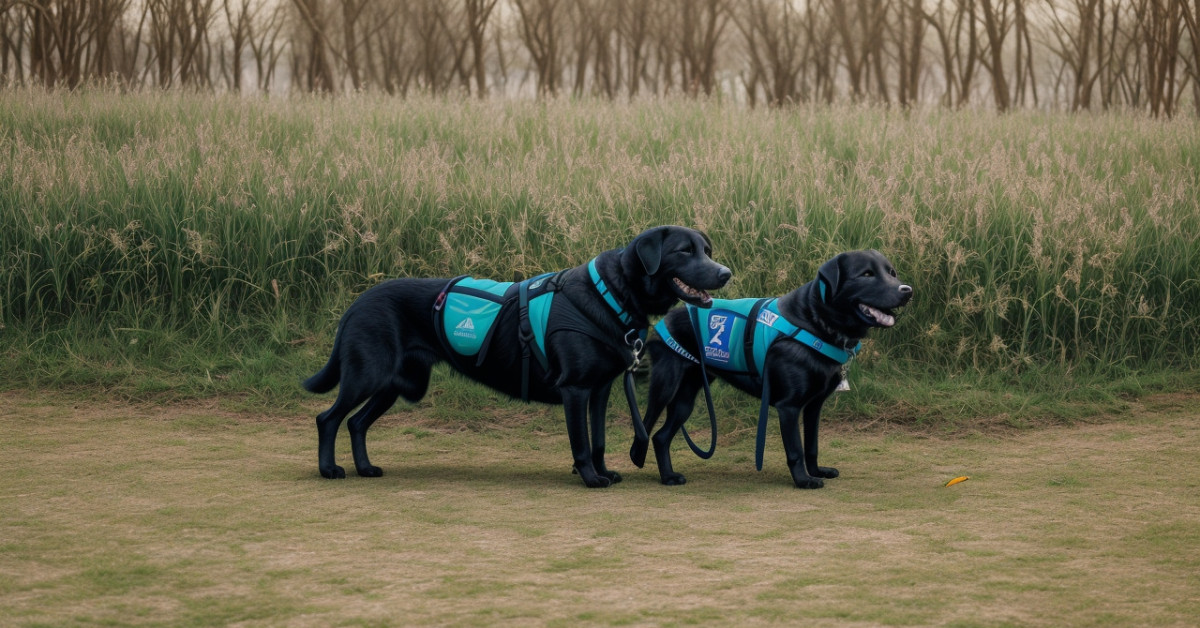Embark on an unforgettable journey where loyalty meets adventure in “Exploring the World Through Four Paws: A Guide Dog Traveler’s Tale.” Discover the unspoken trust and boundless wanderlust that fuels the life-changing exploits of heroic guide dogs and their human companions. In this heartwarming narrative, witness the world unfold through the eyes of a Guide Dog, where every sniff and paw print uncovers secrets of the cities and sights they navigate. Prepare to have your heart taken on a walk you’ll never forget as these furry explorers redefine the way we experience the world. Join us as we traverse cities, scale mountains, and dive into the oceans of stories that have been silently inked in their dedicated service. Your next adventure is just a click away; are you ready to be led on the journey of a lifetime?
THE GOOD

Embarking on an adventure with a guide dog by your side opens up a world of wonder and excitement that’s not just beneficial for the human companion but can be extraordinarily fulfilling for the four-legged navigator as well. One of the most heartwarming aspects of traveling with a guide dog is the bond it forms between the dog and its owner. This bond is built on trust, mutual respect, and affection, enhancing the trip for both parties.
Guide dogs, with their exemplary behavior, often facilitate social interactions, allowing travelers to connect with others who are drawn in by the dog’s discipline and friendliness. These interactions can open doors to cultural exchanges and create memorable moments that enrich the travel experience. The dogs themselves become ambassadors of good will, breaking down barriers between strangers and fostering an atmosphere of kindness and curiosity.
The experience also serves as an incredible demonstration of a guide dog’s training and intelligence. Navigating bustling airports, crowded streets, and new environments is no small feat, yet these dogs do it with a poise that speaks volumes of their capabilities and the meticulous training they have undergone.
Another positive aspect is the level of independence and confidence that the presence of a guide dog offers to its handler. The sense of freedom to explore, knowing there’s a reliable companion to guide every step of the way, provides a unique and liberating sense of adventure for those who might otherwise face restrictions due to visual impairments.
Moreover, guide dogs are also a testament to the power of animal therapy. The comfort and emotional support they provide can significantly enhance the psychological aspect of traveling. The steady, calming presence of a guide dog can help alleviate travel-related stress and anxiety, making for a more enjoyable trip overall.
Traversing various landscapes and cities also gives these canine companions an opportunity to showcase their adaptability and problem-solving skills, as they must constantly assess new challenges and ensure the safety of their handlers. From negotiating crowded sidewalks to finding the best path in a hectic train station, guide dogs do it all with admirable elegance and unwavering loyalty.
For dog lovers and bystanders alike, seeing a guide dog in action can be an enlightening experience, bringing awareness to the role these dogs play in enhancing the lives of individuals with disabilities. It leaves a lasting impression of THE GOOD that these animals do, further championing the cause of guide dog programs and the remarkable difference they make in the world of travel and beyond.
1. He packs light

Traveling with a guide dog adds a unique dimension to any journey. Unlike their human counterparts, a guide dog’s approach to packing is minimalistic. Their essentials are straightforward and specific to their needs, ensuring they can perform their duties without any hindrance. They require a few key items for their well-being and to aid their human partners.
Firstly, a guide dog’s harness is the most significant item they will bring along. It’s a vital tool for communication between the dog and the human, allowing them to navigate through different environments safely. The harness is lightweight but durable, designed to withstand the wear and tear of travel.
Next, food and water are critical. Guide dogs typically have a specific diet to keep them in peak condition, so their handlers often bring a supply of their regular food to avoid any stomach upsets. Collapsible bowls are convenient for feeding and hydrating on the go, taking up little space and being easy to pack.
Comfort items, including a favorite toy or a familiar-smelling blanket, are often included to give the guide dog a sense of home wherever they are. These items can be particularly comforting during long journeys or when staying in a new and unfamiliar place.
Identification is also key. Guide dogs carry ID tags, not just for legal purposes, but also to help others recognize their important role as a guide dog. Additionally, depending on the destination, they might need a pet passport or similar documentation for traveling across borders.
Lastly, in terms of grooming, the guide dog may travel with a simple kit: a brush to keep their coat tidy and bags to take care of waste. It’s all part of leaving no trace and maintaining a clean environment, a sign of respect and courtesy to the places visited and the people living there.
Overall, traveling with a guide dog is about embracing the simplicity of their packing philosophy and focusing on the essentials. It teaches us to carry only what we truly need, ensuring both the dog and the handler are comfortable, safe, and ready to explore the world together.
2. Your dog gets to go everywhere with you

Imagine a life where you never have to leave your best furry friend behind, a life where every step of your journey is accompanied by the pitter-patter of four paws. Guide dogs are not just pets; they are trained companions, eyes for the visually impaired, and a ticket to explore the world with unparalleled companionship.
These remarkable animals undergo rigorous training to perform tasks that enable their handlers to navigate the world safely. For a guide dog, the world is an obstacle course that needs to be tackled with precision, from avoiding overhead obstacles to navigating busy intersections. And for their human companions, this means a sense of freedom and adventure that might otherwise be out of reach.
Having a guide dog means that your dog gets to go everywhere with you. Whether it’s the daily commute on public transportation, a regular visit to the grocery store, or an exotic vacation abroad, your guide dog is right there beside you. This constant companionship fosters an unbreakable bond, creating stories and experiences that are as unique as they are heartwarming.
When traveling with a guide dog, the usual concerns about pet-friendly accommodations or activities vanish. These dogs are not only allowed but welcomed in most places around the world thanks to laws and regulations that recognize their vital role. From restaurants to national parks, and even in cabins on flights, your guide dog is your passport to a world without boundaries.
Travel becomes an extraordinary experience with a guide dog. Imagine walking through the bustling streets of New York City, with your guide dog skillfully leading you past street vendors and through the crowds in Central Park. Envision the sensory delights of a Parisian bakery as your loyal companion rests at your feet while you savor a croissant. Or consider the tranquility of a beach walk at sunset, with the gentle guide by your side, ensuring your path is free of obstacles as the waves kiss the shore.
With every trip, the shared experiences become more than just memories; they become a powerful testament to the human-animal bond. The confidence and independence that a guide dog brings can transform travel from a stressful challenge to an enjoyable and liberating adventure.
A guide dog traveler’s tale is not just about the destinations reached but about the journey itself. It’s about the mutual trust, the unspoken understanding, and the silent communication that guides each step. Through four paws, the world opens up, offering adventures that are rich with sounds, scents, and textures, all experienced from a perspective that only a guide dog team can truly understand. While the human experiences the world through sight, the guide dog is both a guardian and a bridge to a world that’s vibrant with life’s subtler nuances.
Traveling with a guide dog is not just about going places; it’s about experiencing the world together, creating a harmony that transcends limitations and sets the stage for a lifetime of exploration and companionship. As they journey side by side, each person and guide dog pair rewrite the narrative of what it means to see the world through eyes led by four paws.
3. Nash makes it easy to start a conversation with anyone

Traveling can be a solitude journey for some, or an opportunity to meet new people and learn from their stories. For a guide dog and its human companion, it can open up a host of unique social interactions that might otherwise be missed. Nash, a loyal and well-trained guide dog, becomes more than just a navigator for visually impaired individuals; he’s an icebreaker, opening doors to new friendships and conversations around the world.
From airports to city streets, and parks to cafes, Nash’s presence often piques the curiosity of those around. People are naturally drawn to animals, and a guide dog at work is both an endearing and respectable sight. Nash’s harness, which signals his important role, also invites inquiries and admiration from passersby. Unlike the disconnect people might feel surrounded by scores of strangers, Nash’s friendly demeanor and the important job he performs warm people up to his handler.
Nash creates an accessible way for strangers to approach and initiate dialogue. Questions regarding his role, training, and breed are typical conversation starters that can lead to more profound discussions about travel experiences, accessibility issues, and even personal life stories. In many cases, Nash alleviates the usual stresses of socializing for travelers who are visually impaired. Assisting with wayfinding allows his human companion to feel more secure and open to engaging with others.
Every time Nash sits patiently waiting for a train or lies down beside a table at a new restaurant in a foreign land, he bridges the gap between cultures and abilities. Language barriers seem less daunting when a friendly guide dog looks up with understanding eyes—demonstrating companionship transcends spoken words. With Nash by their side, his human companion finds it easier to be a part of the narrative wherever they go; not just observing but actively contributing to the worldly discourse.
Through Nash’s dutiful service and approachability, he unknowingly wears two hats: one as a trusted guide and the other as a traveling social catalyst. With every wag of his tail and attentive response to his handler, he unobtrusively facilitates a sense of community, one that is inclusive and warm. It’s a type of social magic only a four-legged friend can perform with such effortless grace.
As they move from place to place, Nash and his companion not only explore the physical landscapes but also the rich tapestry of human connections that make traveling an invaluable experience. Through four paws and a keen sense of guidance, Nash shows us that a simple presence can transcend traditional barriers to socialization, inviting conversation and building bridges between worlds.
4. He never hogs the sheets

Traveling with a guide dog adds a unique and enriching dimension to the journey for visually impaired individuals. Not only does the guide dog offer its handler mobility and independence, but it also becomes a silent companion through various adventures. One of the many endearing and practical qualities of these canines is that they are trained to be respectful of space, especially when it comes to shared sleeping arrangements. Unlike some pets who might sprawl out and claim the bed, guide dogs are disciplined and understand the necessity of allowing their handler the full comfort of their sleeping space.
This disciplined behavior extends to not hogging the sheets. Guide dogs are taught to lie in a specific spot, usually at the foot of the bed or on a designated mat. Their innate sense of duty and the extensive training they receive ensure that they remain within their assigned space throughout the night, thus causing minimal disruption to their handler’s rest. Not only does this showcase their impeccable training, but it also reflects the deep bond of understanding and respect between the dog and its handler.
Moreover, these talented companions are always aware of their handler’s needs, even during sleep. Should the handler stir or need assistance, the guide dog remains alert and ready to help, always prioritizing the welfare and comfort of their human partner. They make traveling and overnight stays in unfamiliar environments safer and more comfortable, removing one more barrier for individuals with visual impairments to explore the world.
Traveling with a guide dog thus becomes more than just moving from point A to point B; it’s an intricate dance of trust, companionship, and mutual respect—with a bit of extra room under the sheets.
5. He’s lets people know I’m blind

Traveling as a blind person presents unique challenges and experiences, and navigating unfamiliar places relies heavily on the symbiotic relationship between the traveler and their guide dog. The connection between the two is a narrative of trust, companionship, and adventure. A guide dog’s role extends beyond mere navigation; they act as ambassadors to the outside world, silently communicating the needs and condition of their human companion.
Having a guide dog does more than provide mobility assistance; it is a subtle way of signaling others about one’s visual impairment without a verbal exchange. This quiet indication allows for more fluid interactions with the public. People are often more understanding and accommodating when they recognize the presence of a guide dog, realizing it signifies their human is blind. This facilitates smoother social exchanges, whether it’s seeking assistance or navigating a crowded space.
Guide dogs are also social magnets, inviting curiosity and conversation which can make travel more enjoyable and less isolating for the blind individual. Their presence can ease the way into new communities and environments, breaking down barriers that might exist due to a lack of understanding or awareness of visual impairment.
Each journey a guide dog and their human take is imbued with stories. From the bustle of city streets to the tranquility of natural trails, a guide dog interprets the world through four paws, relaying information through a harness and leash with gentle nudges, steadfast blocking, and keen alertness.
The relationship is a testament to the value of trust and communication in experiencing the world. A guide dog does not simply lead the way; they become the eyes and the silent guide for their human, offering freedom, safety, and companionship in every adventure. The tale of a guide dog traveler is one of courage, resilience, and the unspoken bond that turns every journey into an accessible exploration of the wonders around us.
THE NOT-SO GOOD

While guide dogs are often seen as the ultimate companions for adventure and exploration, providing independence and confidence for people with visual impairments to travel the world, there can be a few challenges along the way. Let’s delve into the not-so-good aspects of traveling with a guide dog and how they impact the journey.
One of the primary issues is accessibility. Despite laws and regulations in many countries, not all places are equally accessible to guide dogs. Travellers can encounter hotels, restaurants, and public transportation that are not accommodating. Dealing with rejection or having to advocate for one’s rights can be an emotionally draining experience. There could be cultural differences in the perception of guide dogs, which may cause friction or misunderstandings in certain destinations.
Next, there’s health and safety to consider. Guide dogs, like any other dogs, may face health issues, which can be exacerbated by travel. Changing climates, potential exposure to diseases, the stress of long journeys, and even the availability of appropriate veterinary care can pose risks for the traveling guide dog. It’s crucial for their handlers to plan meticulously, ensuring that the dog’s vaccinations, preventive medications, and overall health checks are up-to-date.
The logistics of caring for a guide dog on the road can be complex. Ensuring the availability of dog food that meets the canine’s dietary requirements isn’t always easy, especially in foreign countries where familiar brands may not be available. Finding appropriate places for the dog’s bathroom needs and exercising them adequately can present another layer of planning challenges, particularly in urban environments.
International travel comes with its own set of complexities, as each country has its own regulations regarding animals’ entry. The process might involve quarantine periods, extensive paperwork, and additional fees. For some, navigating these bureaucratic hurdles can be a significant deterrent from traveling internationally with their guide dogs.
Moreover, the daily responsibilities of caring for a guide dog don’t pause during a vacation or trip. The handler must maintain the dog’s routine, cleanliness, and discipline, which can sometimes limit the spontaneity and relaxation aspects of travel.
Despite these obstacles, the bond between a guide dog and their handler remains a powerful force, often overcoming the not-so-good elements of travel. Handlers learn to adapt, plan for contingencies, and focus on the positive aspects of their unique partnership, which offers them the invaluable gift of freedom and the joy of exploration.
1. Nash likes to spread out

At the heart of every journey with a guide dog is a bond that transcends the typical pet-owner relationship. These remarkable dogs are not only companions but also eyes for those who cannot see, guiding their human partners through the complexities of the world with incredible precision and trust.
Nash is one such guide dog, a trusted traveler who accompanies his handler to various destinations, navigating bustling cities, quiet parks, and every sort of transit system imaginable. With Nash’s guidance, the duo explores the world together, each new location an adventure, an opportunity to learn and to grow.
It’s a partnership like no other, and travel plays a significant role in their life. One thing that Nash’s handler has noticed over time is Nash’s love for stretching out. Dogs enjoy the comfort of space, and Nash is no different, particularly after a long day of work or when they’ve settled into a new environment. Spreading out is Nash’s way of relaxing and claiming a space as his own, a habit that can add a layer of complexity when it comes to accommodations and transportation.
Hotels and lodging must be chosen with Nash’s needs in mind. A cramped and confined area doesn’t suit a large, working animal who deserves to unwind comfortably. Thus, they seek out places with enough floor space for Nash to extend his limbs and lay sprawled, basking in the well-earned rest after guiding diligently throughout the day.
On the road, Nash’s preference to spread out might mean booking seats that allow for additional legroom or ensuring that their travel arrangements don’t require the guide dog to stay confined in a restrictive space for extended periods. It’s a small price to pay for the independence and service Nash provides.
As Nash’s handler shares their tales of globetrotting adventure, it becomes clear how understanding and accommodating a guide dog’s natural behaviors and needs is essential. For every dog, especially a guide dog whose work is so pivotal, having the time and space to sprawl out, to recharge, and to enjoy the journey, is pivotal to the success of traveling together.
Beyond being a mere travel companion, Nash serves as a bridge to the world for his human, offering a sense of freedom and security that only a loyal guide dog can provide. Together, they represent the epitome of courage and exploration. The adventures of Nash and his handler not only inspire others to embrace life’s possibilities regardless of physical challenges but also highlight the incredible adaptability and dedication inherent in guide dogs everywhere.
2. I don’t always know where to put his poop

Traveling with a guide dog enriches the experience of exploration, offering companionship and invaluable assistance to those with visual impairments. However, it also presents unique challenges, particularly when it comes to managing the dog’s waste. As a handler traversing various environments, you quickly realize that not all places are equally equipped with designated disposal areas or waste bins.
When navigating unfamiliar locales, one of your primary concerns might be where to place your guide dog’s poop. It’s an aspect of pet guardianship that is not always anticipated or discussed in guide training, but it’s an essential consideration for maintaining cleanliness and public health. To mitigate this concern, you can implement a few strategies:
-
Carry Supplies: Always have a supply of poop bags with you during travels. Biodegradable bags are an eco-friendly option that help reduce your carbon pawprint.
-
Scout Ahead: When you arrive at a new destination, take some time to familiarize yourself with the area. Locate nearby trash bins and designated dog relief areas so you’ll know exactly where to go when the time comes.
-
Ask for Assistance: Don’t hesitate to ask a passerby or a local for directions to the nearest bin. Most people will be understanding and happy to point you in the right direction.
-
Plan Your Route: If you’re heading out for a longer trek, plan your route around areas you know will have facilities to dispose of waste properly. This might include public parks or dog-friendly spaces.
-
Stay Prepared for the Unexpected: There might be times when you can’t find a place to dispose of the waste immediately. In such cases, you may need to carry the bag with you until you find a suitable spot. Consider packing a small, sealable container to temporarily store the waste bag and mitigate odors.
The experience of traveling with a guide dog is a dance of synchrony and cooperation, but it also calls for preparedness and adaptability, especially for the less glamorous aspects like waste management. By taking a proactive approach to where you put your dog’s poop, you ensure a pleasant journey not just for you, but also for those around you, all while upholding the standards of responsibility and respect for the environments you visit with your four-pawed companion.










